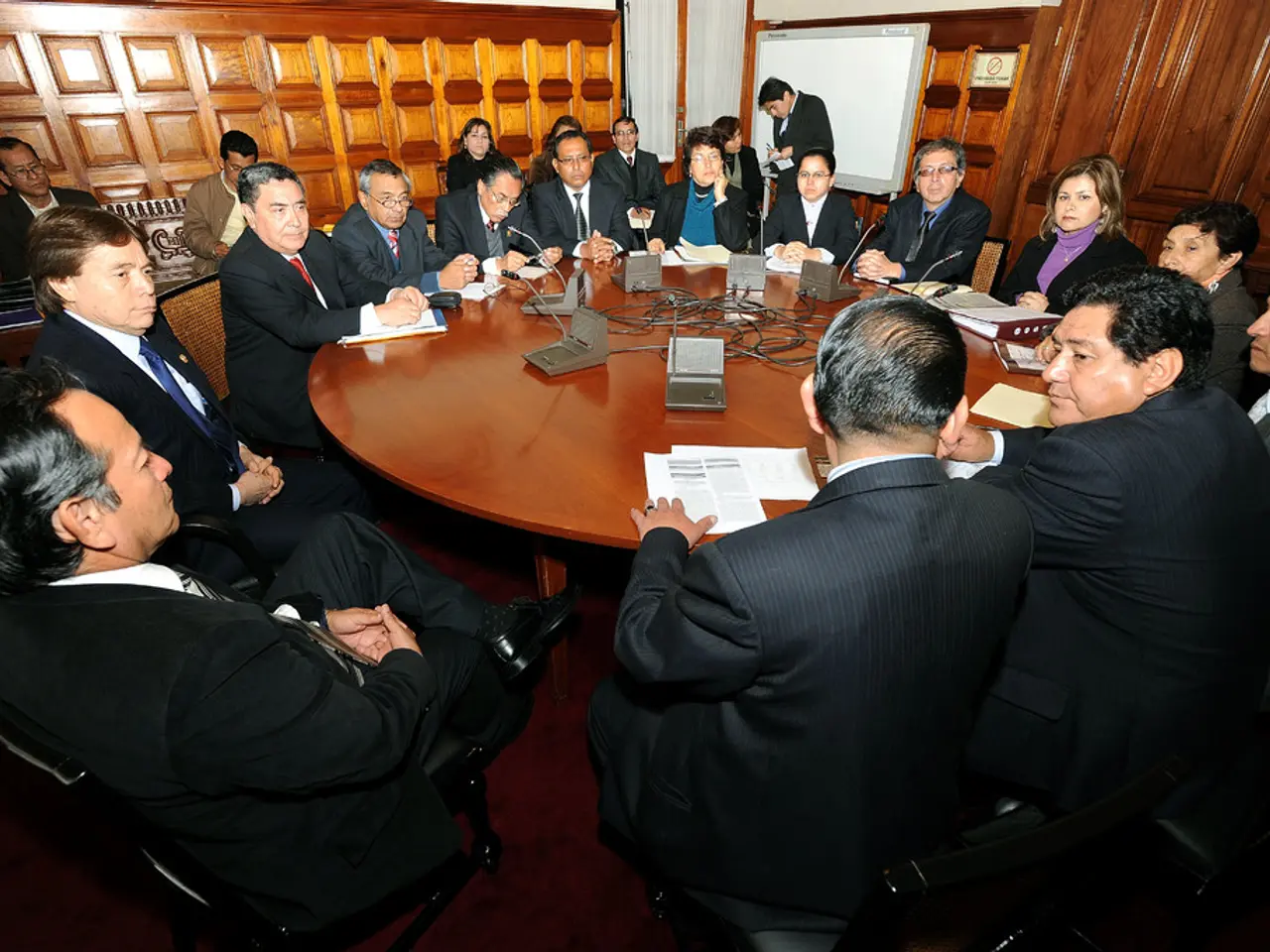Efficient Coalition Gatherings
In the realm of coalition work, meetings play a pivotal role in driving progress and achieving shared goals. Here are some essential strategies for conducting successful meetings in a coalition setting, as well as tips for conference calls and video meetings.
Preparation is Key
The coalition facilitator should send the agenda to members prior to the meeting, allowing them to prepare and suggesting any additional items that they would like to add. It's also beneficial to test all equipment before the start of the meeting to ensure a smooth and hassle-free session.
Setting the Stage for Productive Discussions
Effective strategies for coalition meetings include establishing clear leadership and decision-making structures, maintaining transparency through regular information-sharing, and managing communication carefully to keep discussions focused and inclusive. Clarifying membership and leadership roles, deciding if leadership rotates or rests with specific members, and selecting leaders who are trusted and influential within the group are crucial steps in this process.
Meeting Etiquette
For conference calls and video meetings, etiquette and practical tips involve creating a safe environment for participation, using collaborative tools, and rigorously following up with minutes and action plans. Encourage full participation while steering conversations to stay on track and avoid tangents. Use shared digital documents or collaboration platforms for real-time updates, tracking progress, and maintaining transparency.
Maintaining Focus and Efficiency
The facilitator should allot time for topics based on their significance, placing the most critical or time-consuming items at the top of the agenda. Foster open but focused dialogue to address disagreements and use formalized processes to resolve conflicts without undermining coalition unity. Consider breaking large, complex meetings into smaller working groups for specific agenda elements, enabling more efficient problem-solving and bridging differences among coalition members.
Staying Engaged and Accountable
Be present. Pay attention and set aside other tasks during the meeting. Wait for others to finish before speaking. Stay on the line for the entire call, or let others know at the beginning that you will need to leave early. Speak slightly slower than usual and enunciate clearly.
Promoting Transparency and Accountability
Meeting notes help keep members informed about the work of the coalition, regardless of whether they are in attendance at each meeting. Meeting notes typically contain the date, time, place of the meeting, a list of members and officers present, reports of officers, chairs, and committee representatives, votes that are taken during a meeting, elections and nominations, and important announcements. Assign a note-taker and distribute concise meeting minutes promptly, clearly highlighting decisions, assigned tasks, and deadlines to reinforce accountability.
Resources for Meeting Guidelines and Support
Examples of healthy meeting guidelines and assistance in guideline writing may be available from local Extension offices, local health departments, and other local nonprofit organizations. For conference calls, all members who wish to participate in the call need to have access to a telephone with the speakerphone feature. Recommend healthful food items to serve at meetings and events.
In conclusion, building a winning coalition meeting combines sound governance practices with disciplined meeting management and clear communication norms suited to virtual or in-person settings. These approaches help overcome common challenges such as power imbalances, agenda drift, and disengagement. Employing these strategies can lead to more productive and successful coalition meetings, ultimately contributing to the achievement of shared goals.
In the context of community development, it's crucial to apply these effective strategies for coalition meetings in rural areas, ensuring that rural development initiatives are addressed and decisions are made collectively. Furthermore, investing in education-and-self-development is essential for coalition members to fully participate and learn from these meetings.
Promoting transparency and accountability within the coalition's work is key to achieving their shared goals. Meeting minutes and records should be collected, maintained, and distributed to all members, ensuring that everyone remains informed and engaged in the learning process.




